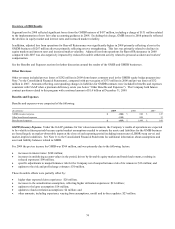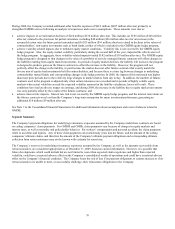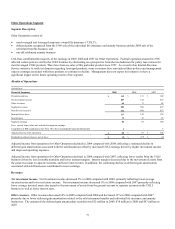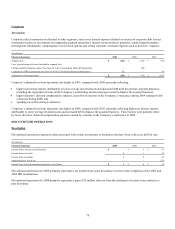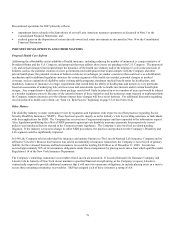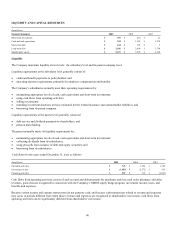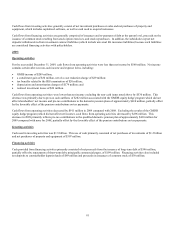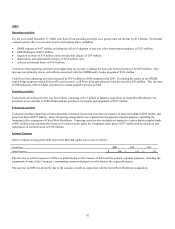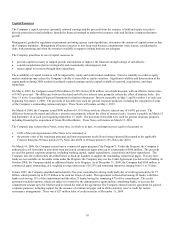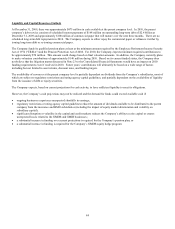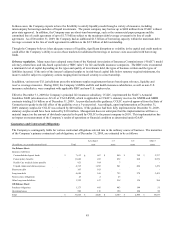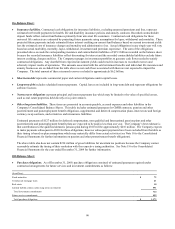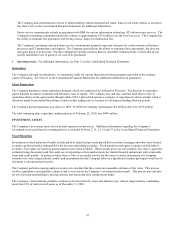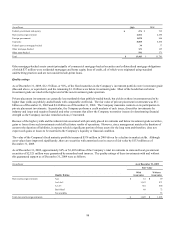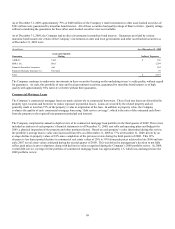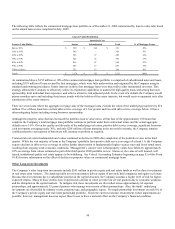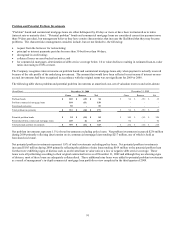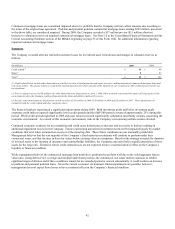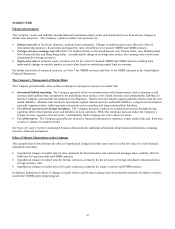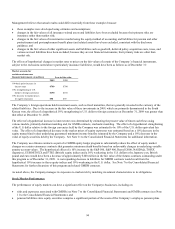Cigna 2009 Annual Report Download - page 104
Download and view the complete annual report
Please find page 104 of the 2009 Cigna annual report below. You can navigate through the pages in the report by either clicking on the pages listed below, or by using the keyword search tool below to find specific information within the annual report.
84
Liquidity and Capital Resources Outlook
At December 31, 2009, there was approximately $475 million in cash available at the parent company level. In 2010, the parent
company’s debt service consists of scheduled interest payments of $168 million on outstanding long-term debt of $2.4 billion at
December 31, 2009 and approximately $100 million of commercial paper that will mature over the next three months. There are no
scheduled long-term debt repayments in 2010. The Company expects to either repay the commercial paper or refinance it either by
issuing long-term debt or re-issuing commercial paper.
The Company funds its qualified pension plans at least at the minimum amount required by the Employee Retirement Income Security
Act of 1974 (“ERISA”) and the Pension Protection Act of 2006. For 2010, the Company expects minimum required contributions to
be approximately $70 million. This amount could change based on final valuation amounts. In addition, the Company currently plans
to make voluntary contributions of approximately $140 million during 2010. Based on its current funded status, the Company does
not believe that the litigation matter discussed in Note 23 to the Consolidated Financial Statements would have an impact on 2010
funding requirements even if resolved in 2010. Future years’ contributions will ultimately be based on a wide range of factors
including but not limited to asset returns, discount rates, and funding targets.
The availability of resources at the parent company level is partially dependent on dividends from the Company’s subsidiaries, most of
which are subject to regulatory restrictions and rating agency capital guidelines, and partially dependent on the availability of liquidity
from the issuance of debt or equity securities.
The Company expects, based on current projections for cash activity, to have sufficient liquidity to meet its obligations.
However, the Company’s cash projections may not be realized and the demand for funds could exceed available cash if:
x ongoing businesses experience unexpected shortfalls in earnings;
x regulatory restrictions or rating agency capital guidelines reduce the amount of dividends available to be distributed to the parent
company from the insurance and HMO subsidiaries (including the impact of equity market deterioration and volatility on
subsidiary capital);
x significant disruption or volatility in the capital and credit markets reduces the Company’s ability to raise capital or creates
unexpected losses related to the GMDB and GMIB businesses;
x a substantial increase in funding over current projections is required for the Company’s pension plan; or
x a substantial increase in funding is required for the Company’s GMDB equity hedge program.


